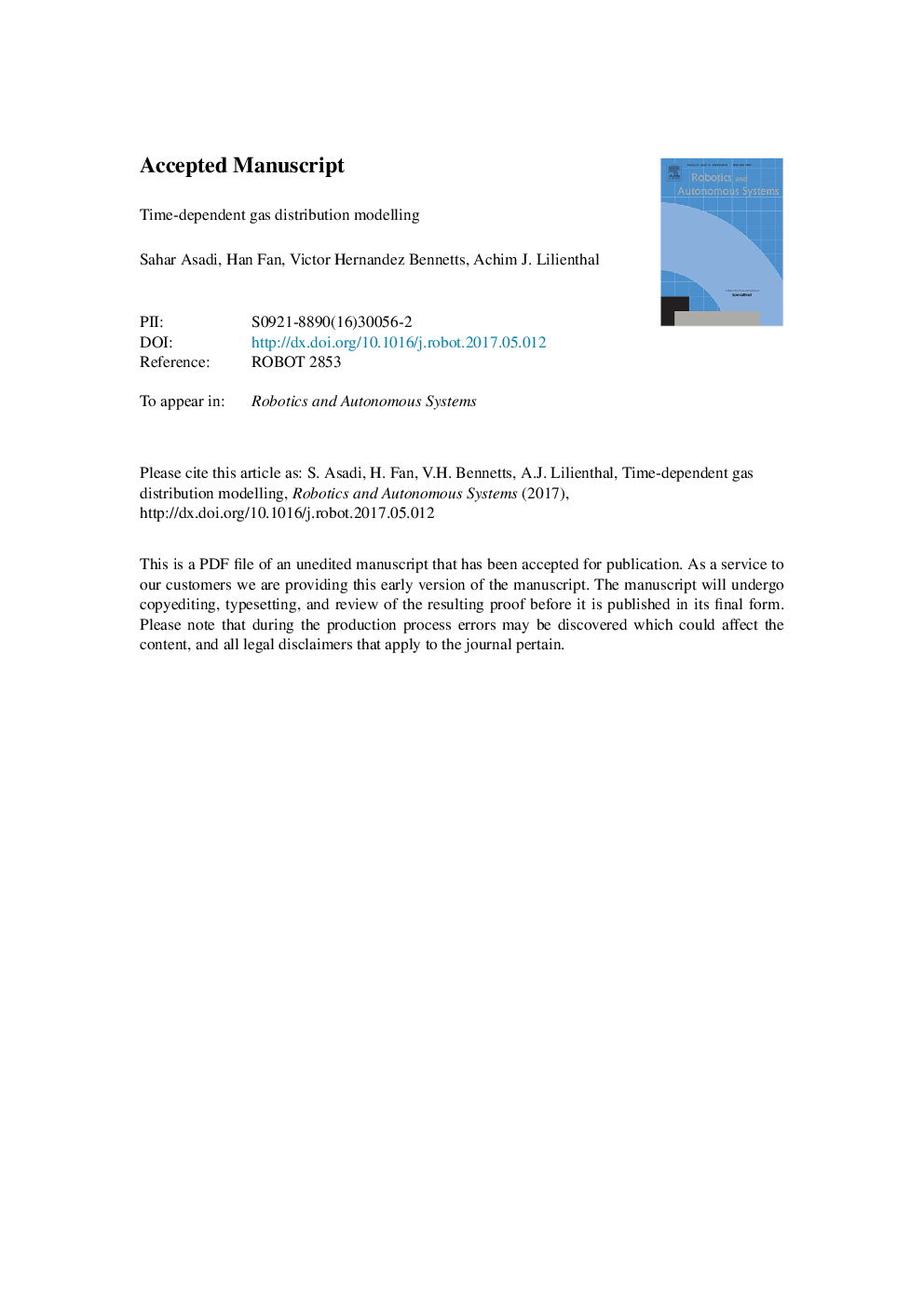| کد مقاله | کد نشریه | سال انتشار | مقاله انگلیسی | نسخه تمام متن |
|---|---|---|---|---|
| 4948769 | 1439846 | 2017 | 43 صفحه PDF | دانلود رایگان |
عنوان انگلیسی مقاله ISI
Time-dependent gas distribution modelling
ترجمه فارسی عنوان
مدل سازی توزیع گاز وابسته به زمان
دانلود مقاله + سفارش ترجمه
دانلود مقاله ISI انگلیسی
رایگان برای ایرانیان
کلمات کلیدی
غربال ربات موبایل، مدلسازی توزیع گاز آماری، نمونه برداری زمانی، مدل سازی توزیع گاز وابسته به زمان،
موضوعات مرتبط
مهندسی و علوم پایه
مهندسی کامپیوتر
هوش مصنوعی
چکیده انگلیسی
Artificial olfaction can help to address pressing environmental problems due to unwanted gas emissions. Sensor networks and mobile robots equipped with gas sensors can be used for e.g. air pollution monitoring. Key in this context is the ability to derive truthful models of gas distribution from a set of sparse measurements. Most statistical gas distribution modelling methods assume that gas dispersion is a time-constant random process. While this assumption approximately holds in some situations, it is necessary to model variations over time in order to enable applications of gas distribution modelling in a wider range of realistic scenarios. Time-invariant approaches cannot model well evolving gas plumes, for example, or major changes in gas dispersion due to a sudden change of the environmental conditions. This paper presents two approaches to gas distribution modelling, which introduce a time-dependency and a relation to a time-scale in generating the gas distribution model either by sub-sampling or by introducing a recency weight that relates measurement and prediction time. We evaluated these approaches in experiments performed in two real environments as well as on several simulated experiments. As expected, the comparison of different sub-sampling strategies revealed that more recent measurements are more informative to derive an estimate of the current gas distribution as long as a sufficient spatial coverage is given. Next, we compared a time-dependent gas distribution modelling approach (TD Kernel DM+V), which includes a recency weight, to the state-of-the-art gas distribution modelling approach (Kernel DM+V), which does not consider sampling times. The results indicate a consistent improvement in the prediction of unseen measurements, particularly in dynamic scenarios. Furthermore, this paper discusses the impact of meta-parameters in model selection and compares the performance of time-dependent GDM in different plume conditions. Finally, we investigated how to set the target time for which the model is created. The results indicate that TD Kernel DM+V performs best when the target time is set to the maximum sampling time in the test set.
ناشر
Database: Elsevier - ScienceDirect (ساینس دایرکت)
Journal: Robotics and Autonomous Systems - Volume 96, October 2017, Pages 157-170
Journal: Robotics and Autonomous Systems - Volume 96, October 2017, Pages 157-170
نویسندگان
Sahar Asadi, Han Fan, Victor Hernandez Bennetts, Achim J. Lilienthal,
